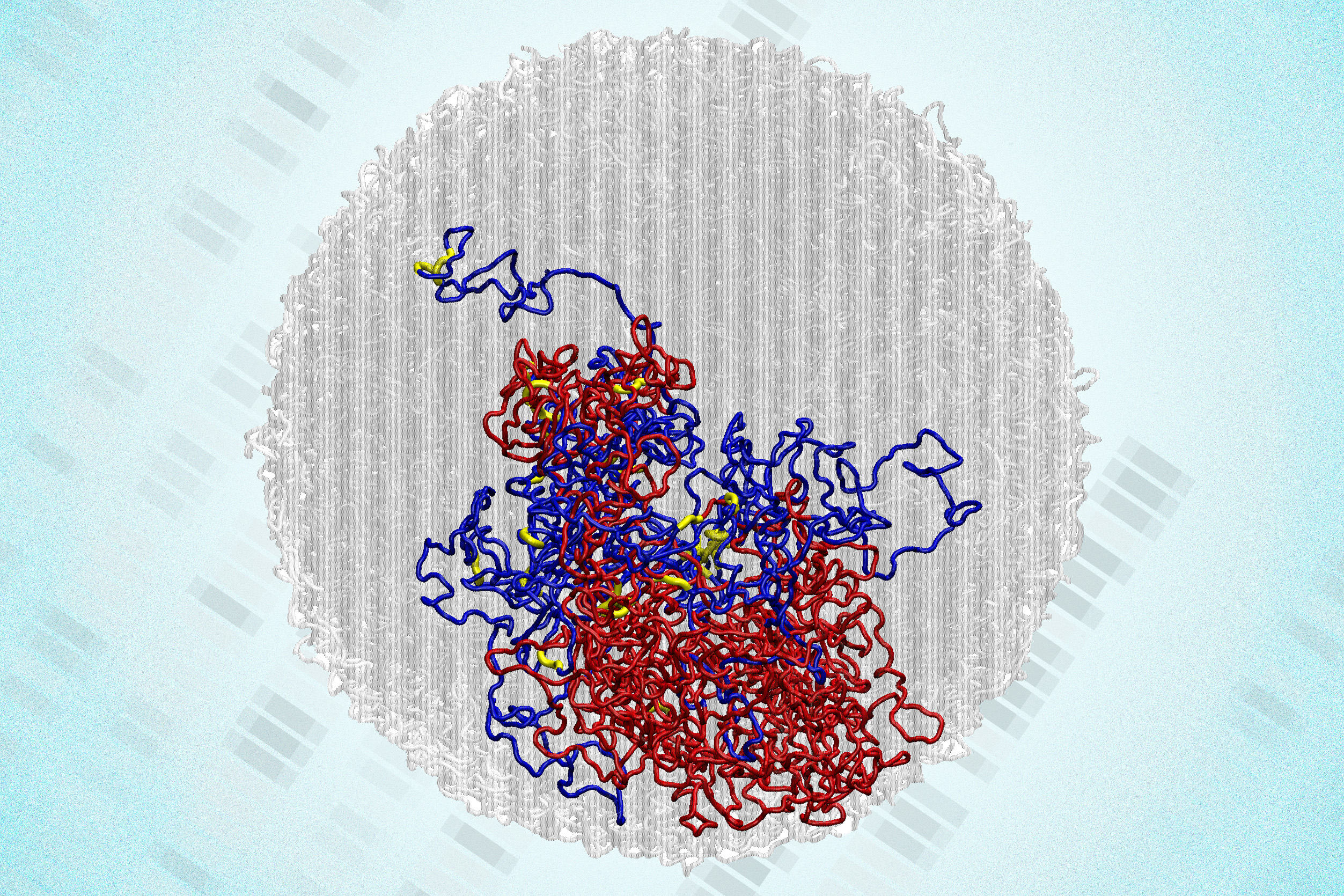Health
Scientists Uncover Hidden Loops in Cell Division Genomes

In a significant breakthrough, researchers at the Massachusetts Institute of Technology (MIT) have discovered that tiny 3D loops in the genomes of dividing cells persist through the cell division process, challenging long-held scientific beliefs. Traditionally, it was understood that during mitosis, the genome loses its complex 3D structure, which plays a vital role in gene regulation. However, this new research indicates that small loops connecting regulatory elements and genes remain intact throughout cell division.
The study, published in Nature Structural and Molecular Biology, reveals that these regulatory loops actually become more pronounced as chromosomes compact in preparation for division. This compaction brings genetic regulatory elements closer together, enhancing their ability to remain interconnected. According to Anders Sejr Hansen, an associate professor of biological engineering at MIT, the findings prompt a reconsideration of how mitosis has been perceived: “In the past, mitosis was thought of as a blank slate, with no transcription and no structure related to gene activity. And we now know that that’s not quite the case. There’s always structure. It never goes away.”
The research team, led by Viraat Goel, a PhD candidate at MIT, employed an advanced genome mapping technique known as Region-Capture Micro-C (RC-MC), which offers 100 to 1,000 times greater resolution than previous methods. This innovative approach allowed the scientists to identify a previously unrecognized genome structure termed “microcompartments.” These loops form when enhancers—short DNA sequences that activate gene transcription—stick together with nearby promoters during the compaction phase of mitosis.
As the study progressed, the researchers observed that these microcompartments not only persisted during mitosis but also intensified as chromosomes were compacted. This discovery contradicts the previously accepted notion that significant gene regulation ceased during cell division. “We went into this study thinking, well, the one thing we know for sure is that there’s no regulatory structure in mitosis, and then we accidentally found structure in mitosis,” Hansen noted.
The implications of these findings extend beyond mere structural understanding. The researchers suggest that the persistence of microcompartments may help cells retain regulatory interactions from one cell cycle to the next. This could be key in explaining a spike in gene transcription that occurs near the end of mitosis, a phenomenon that has puzzled scientists for decades.
Historically, it was believed that transcription halted entirely during mitosis. However, recent studies indicated that a brief spike in transcription occurs during this phase, only to be suppressed until division concludes. The MIT team found that during mitosis, microcompartments are often located near genes associated with this transcription spike, suggesting a complex interplay between structural genome organization and gene activity.
Looking ahead, the researchers are exploring how the physical characteristics of cells, such as size and shape, influence genome structure and gene regulation. Hansen emphasized the importance of understanding how cells decide which microcompartments to retain after division, which ensures accurate gene expression in daughter cells.
The research was supported by various organizations, including the National Institutes of Health and the National Science Foundation, reflecting its significance in advancing the field of genomics and cell biology. As scientists continue to unravel the complexities of genome organization, this study lays the groundwork for future exploration into how genomic structures impact cellular functions and gene regulation across different biological contexts.
-

 Science2 weeks ago
Science2 weeks agoIROS 2025 to Showcase Cutting-Edge Robotics Innovations in China
-

 Politics2 weeks ago
Politics2 weeks agoJudge Considers Dismissal of Chelsea Housing Case Citing AI Flaws
-

 World2 weeks ago
World2 weeks agoBravo Company Veterans Honored with Bronze Medals After 56 Years
-

 Top Stories2 weeks ago
Top Stories2 weeks agoIndonesia Suspends 27,000 Bank Accounts in Online Gambling Crackdown
-

 Lifestyle2 weeks ago
Lifestyle2 weeks agoStone Island’s Logo Worn by Extremists Sparks Brand Dilemma
-

 Health2 weeks ago
Health2 weeks agoStartup Liberate Bio Secures $31 Million for Next-Gen Therapies
-

 Sports2 weeks ago
Sports2 weeks agoMel Kiper Jr. Reveals Top 25 Prospects for 2026 NFL Draft
-

 Health2 weeks ago
Health2 weeks agoTop Hyaluronic Acid Serums for Radiant Skin in 2025
-

 World2 weeks ago
World2 weeks agoHoneywell Predicts Record Demand for Business Jets Over Next Decade
-

 Politics2 weeks ago
Politics2 weeks agoNew Jersey Voters Urged to Register Ahead of November Election
-

 Lifestyle2 weeks ago
Lifestyle2 weeks agoMary Morgan Jackson Crowned Little Miss National Peanut Festival 2025
-

 Sports2 weeks ago
Sports2 weeks agoYamamoto’s Mastery Leads Dodgers to 5-1 Victory in NLCS Game 2









